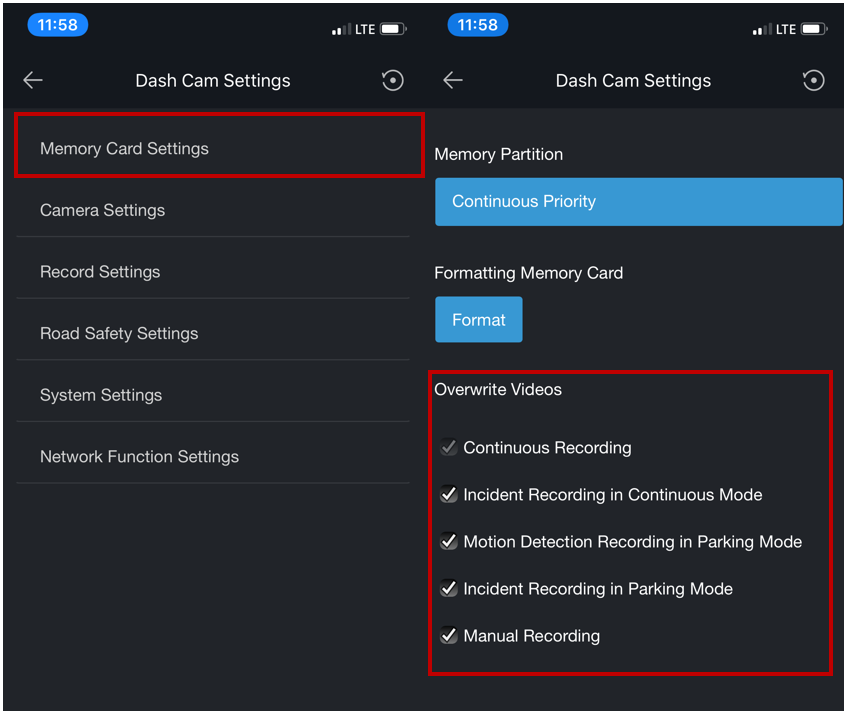What is the G sensor on a dash cam?
Dash cams with a g sensor are designed to capture video while the car is in motion. This feature is often marketed as a safety feature, as it can help catch drivers who are driving drunk or who are speeding. Though this technology is becoming more common, many users don’t know what the g sensor on their dash cam is or how to use it.

What is the g sensor on a dash cam?
A g Sensor is an accelerometer that registers values based on the amount of force applied during an impact. It is commonly used in dash cams to measure an impact’s force and determine whether to save the footage. A dash cam is a camera that mounts to the dashboard of your car and records video while you drive.
When a g sensor detects a sudden change in acceleration, it can trigger the dash cam to start recording. This can be helpful in the event of an accident, as the recorded video can be used to determine who was at fault.
G sensors can also be used to automatically save video footage in the event of a collision. This feature is often found in higher-end dash cams, and can be a lifesaver if you’re involved in an accident and need to access the footage quickly.
How does the G sensor work on a dash cam?
A g sensor is a type of accelerometer that is commonly used in dash cams. It is used to measure the acceleration of the car in all directions. The g sensor is important because it can be used to detect when the car is involved in an accident. It can also be used to detect when the car is making sudden changes in direction.
The g sensor is located inside the dash cam. It is usually mounted on the dash cam’s PCB. The g sensor consists of a small chip that contains a proof mass and a set of springs. The proof mass is used to measure the acceleration of the car. The springs are used to support the proof mass and to keep it from moving around.
The g sensor is connected to the dash cam’s processor. The processor uses the information from the g sensor to determine the acceleration of the car. The processor can then use this information to trigger the dash cam’s recording function.
The g sensor can also be used to automatically turn the dash cam on when the car is turned on. The g sensor is an important part of the dash cam. It can be used to detect when the car is involved in an accident.
What are the benefits of G Sensor on dash cam?
Camera protects the file:

A g Sensor is a key feature that can help protect the video file on your dash cam. This sensor detects sudden changes in movement, such as during an accident, and automatically saves the footage leading up to and during the event.
The benefit of having a g Sensor built into your dash cam is that you won’t have to worry about losing substantial evidence if you are involved in a collision. One of the key benefits of using a dash cam with a g Sensor is that it can provide valuable information in case of an accident or collision.
With this feature, you will have access to clear video evidence that can be used by insurance companies or law enforcement agencies when determining fault. This can save you time and money, mainly if there are disputes over who was at fault for the incident.
Ensuring the file isn’t overwritten:

Dash cams have become increasingly popular over recent years as they provide drivers with a sense of security and protection on the roads. With the ability to record high-quality footage, dash cams capture essential evidence in case of accidents or incidents that occur while driving.
However, one issue that some drivers experience is the risk of their files being overwritten when their SD card runs out of space. This can lead to them losing valuable footage, which could be vital in an insurance claim or court case.
Many dash cams now come equipped with a g Sensor to avoid this issue. The g Sensor is an accelerometer that detects sudden changes in acceleration and deceleration, such as when involved in a collision.
When this happens, the g Sensor will automatically lock and save the current recording file so it cannot be overwritten by new footage. This feature ensures that crucial evidence is not lost due to limited storage capacity.
How do I calibrate a Dash Cam G Sensor?
If you’re wondering how to calibrate your Dash Cam g Sensor, don’t worry – it’s a straightforward process. The g Sensor is an essential component in many dash cams, responsible for detecting sudden changes in acceleration, such as hard braking or collisions.
Calibrating the g Sensor ensures that it accurately records these events and provides reliable evidence of any incidents on the road. To calibrate your dash cam’s g Sensor, navigate to the video menu option on the device.
From there, look for a setting labelled “G Sensor” or “Sensitivity.” Adjusting this setting will change the level of force required to trigger an event recording. It’s essential to find a balance between sensitivity and accuracy; too low of a sensitivity may result in missed events, while too high of a sensitivity could lead to false recordings from minor bumps and vibrations.
Conclusion:
It is clear that a g Sensor on a dash cam can be an invaluable feature for those who want to ensure their safety on the road. The g Sensor can detect sudden changes in motion, such as hard braking and collisions, and will then automatically activate the dash cam’s recording function to preserve any footage of the incident.
Additionally, this technology can also be used to alert drivers to dangerous conditions while they are driving.
related posts:
Can Dash Cam Footage Be Used In Court?
Can Dash Cam Footage Be Used For Speeding?
How To Reset The Nexar Dash Cam?




